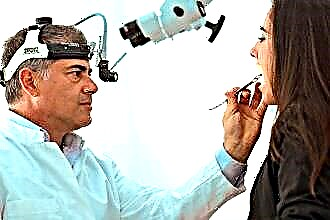Infectious pharyngitis, that is, an inflammatory process in the pharyngeal region, provoked by infectious agents, is extremely common. It can proceed in isolation or be combined with damage to other anatomical parts of the respiratory system. At the same time, it cannot be ruled out that the causative agent of the infection is gonococcus, or Neisseria gonorrhoeae, a gram-negative bacterium that can infect the mucous membrane of not only the oropharynx, but also the genitals, conjunctiva, rectum. To quickly establish a diagnosis and begin treatment, you need to know what symptoms accompany gonococcal pharyngitis.
Causes
 Gonorrhea as a disease is one of the most common representatives of sexually transmitted infections. Although the classic form of this pathology is due to the involvement, first of all, of the organs of the genitourinary system, there is a volumetric classification of lesions localized outside its borders. In this case, gonococcal inflammation can have both acute and chronic course, and sexual transmission - although the most probable and frequent, but not the only possible route of infection.
Gonorrhea as a disease is one of the most common representatives of sexually transmitted infections. Although the classic form of this pathology is due to the involvement, first of all, of the organs of the genitourinary system, there is a volumetric classification of lesions localized outside its borders. In this case, gonococcal inflammation can have both acute and chronic course, and sexual transmission - although the most probable and frequent, but not the only possible route of infection.
Gonorrheal pharyngitis, or oropharyngeal gonorrhea, occurs when the gonococcus enters the oropharynx. The source of infection is a patient with gonorrhea. In this case, the transfer of the infectious agent from the affected area (usually the genitals) to the contact mucous membrane is most often initiated. Inflammation of the pharynx develops as a result of unprotected oral-genital contact.
Other possible routes of infection:
- contact and household (use of shared towels, cutlery);
- perinatal (when the fetus comes into contact with the mucous membrane of the mother's genitals during childbirth);
- with a kiss (if one of the partners suffers from a gonococcal infection of the pharynx).
Gonococcal pharyngitis can occur not only in adults but also in children.
Cases of inflammation of the pharynx, provoked by gonococcus, occur in different age categories of patients. If adults and children are in close contact at home, violate hygiene rules, the likelihood of infection increases. All contact persons, regardless of their age, have a risk of infection.
Symptoms
For pharyngitis caused by the causative agent of gonorrhea, a violent course is not typical. Although the onset of the disease may be sudden, the patient's condition is not severe. The first signs may appear already several days after infection, therefore, with timely treatment, it is easier to establish the fact of direct or indirect contact with a patient with gonorrhea.
Patient complaints
Patients are worried about:
 Dryness, irritation, scratching in the throat area.
Dryness, irritation, scratching in the throat area.- Moderately severe pain when swallowing, talking.
- Moderately expressed hoarseness.
- General weakness, drowsiness, fatigue.
- Increased body temperature values.
Fever, as a rule, is within the subfebrile range (37.1-37.9 ° C), is observed in the acute period and persists for several days. At the same time, there is no pronounced intoxication syndrome, the general condition is disturbed slightly or moderately.
Gonococcal pharyngitis does not have any specific features and can be asymptomatic.
In some cases, patients do not complain, experiencing only minor discomfort in the throat. They can associate it with inhalation of dry dusty air, smoking, or not paying attention at all. An "empty" sip causes minor pain.
Objective signs
When examining the oropharynx, the following changes in the mucous membrane can be seen:
- redness;
- swelling;
- grain;
- filmy overlays.
Both the pharynx and the palatine tonsils are affected - they increase, redden, and become covered with a yellow-gray bloom. On the back wall of the pharynx, reddened, enlarged follicles in the form of grains stand out.
Pharyngitis in children
If a small child is infected, the disease proceeds as rhinopharyngitis, with the involvement of the nasal mucosa in the pathological process. In addition, simultaneous eye inflammation is also characteristic:
- redness and swelling of the eyelids;
- purulent discharge from the corners of the eyes;
- lacrimation, photophobia.
Objective changes in the mucous membrane of the pharynx coincide with the picture typical for adult patients. When establishing the diagnosis, the anamnesis is important (the presence of gonococcal infection in the mother, the likelihood of domestic infection), since the symptoms of eye damage are not found in all patients, and the picture of changes in the oropharynx requires differentiating gonococcal pharyngitis with pharyngeal infections of a different etiology.
Treatment
 When confirming the diagnosis of pharyngitis of gonococcal etiology, treatment necessarily includes:
When confirming the diagnosis of pharyngitis of gonococcal etiology, treatment necessarily includes:
- Antibacterial therapy.
The drugs of choice are antibiotics of the cephalosporin group (Ceftriaxone, Cefotaxime, Cefixime), fluoroquinolones (Ciprofloxacin), macrolides (Azithromycin). Therapy is carried out in a course, the dosage and frequency of administration of drugs is determined by the doctor based on the form of the course, age and body weight of the patient.
- Local antiseptics.
Local antiseptics (Miramistin, Chlorhexidine) are prescribed for pharyngeal irrigation in the form of aerosols.
It is also recommended:
- diet (exclusion of spicy, salty foods, carbonated drinks, coffee);
- correction of microclimate parameters (air humidification, maintenance of room temperature indicators at the level of 19-22 ° С);
- quitting smoking, alcohol.
The basis of the treatment of gonorrheal pharyngitis is the elimination of the causative agent of the infection.
Eradication, that is, the complete destruction of the infectious agent, is achieved through antibiotic therapy. It cannot be started on its own, since the pathogen, with the wrong approach, acquires resistance (resistance). In addition, self-medication can lead to complications. Children are treated as directed and under the supervision of a pediatrician.
After treatment, control of eradication is mandatory - for this, microscopy of the material (from the cavity of the oropharynx, other affected areas), sowing the material on nutrient media can be used. Treatment is considered successful only in the absence of gonococci.

 Dryness, irritation, scratching in the throat area.
Dryness, irritation, scratching in the throat area.

